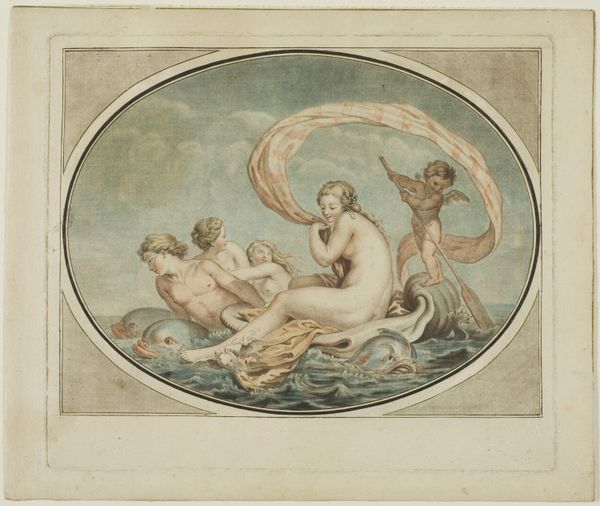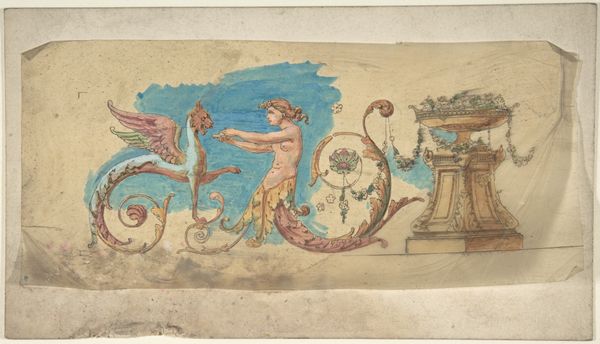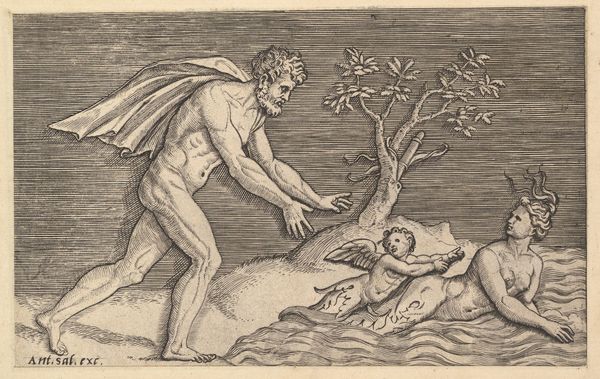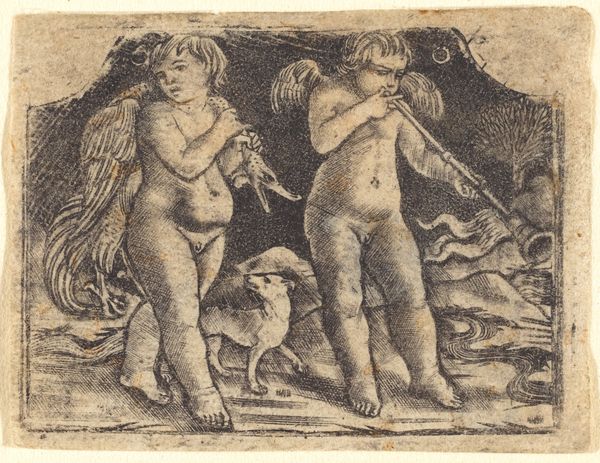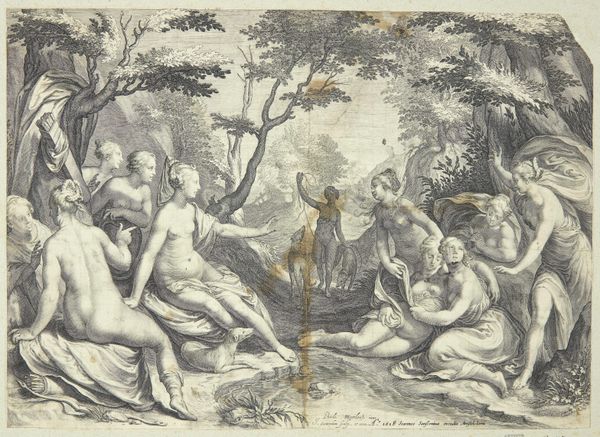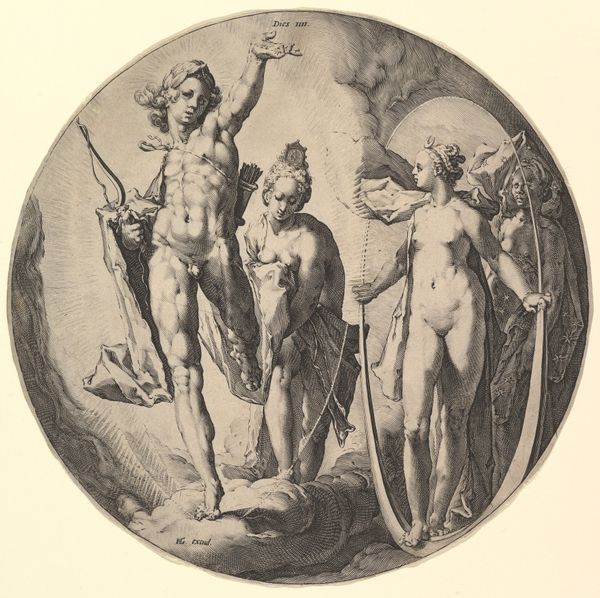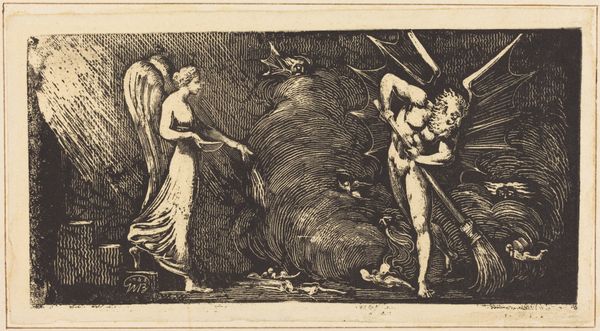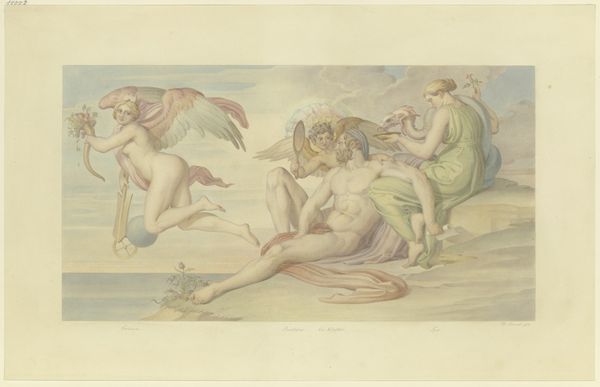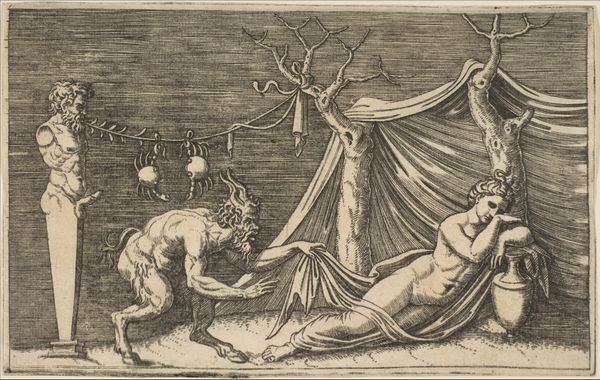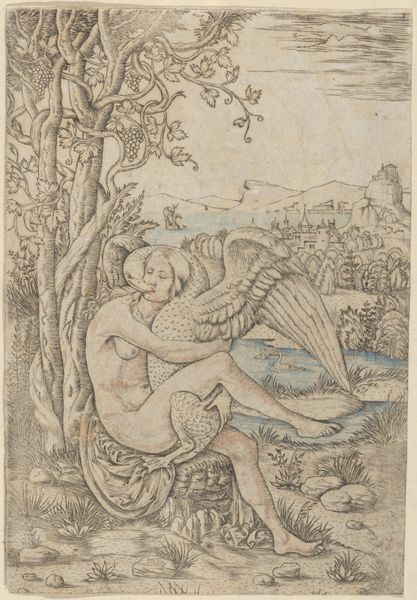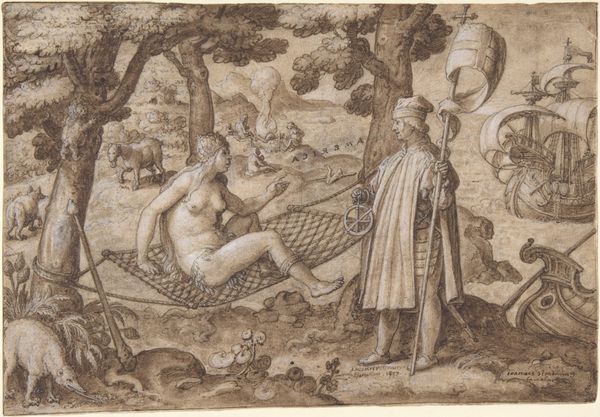
drawing, coloured-pencil, watercolor
#
drawing
#
coloured-pencil
#
allegory
#
landscape
#
figuration
#
watercolor
#
coloured pencil
#
ancient-mediterranean
#
history-painting
#
watercolor
Dimensions: 312 mm (height) x 346 mm (width) (bladmaal)
Curator: Look at this arresting image, a drawing titled "Oedipus and the Sphinx" created between 1883 and 1884 by Niels Skovgaard. Editor: It’s quite muted, almost dreamlike in its coloration. There's something very striking about the bare materiality of the characters contrasting with what appears to be a hazy, soft, pastel-colored world. Curator: Skovgaard uses colored pencil and watercolor to bring to life the famous encounter. The work really encapsulates the intersection of mythology and the patriarchal structures present during Skovgaard’s era. Oedipus, represented as an idealized nude figure, faces the monstrous Sphinx, embodying societal anxieties about the power and agency of marginalized voices. Editor: The skulls and bones littering the lower part of the artwork remind the viewer about consumption, of flesh literally giving way to skeletal form. It emphasizes that the answer to the riddle comes at a considerable human cost. The labor required to solve these existential problems often goes unrecognized. The production of art, the production of life. Curator: Exactly. The composition further reinforces this dynamic, don't you think? The Sphinx occupies the darker side, seemingly emerging from the rock face, while Oedipus is situated in this pale blue space. It seems Skovgaard is visualizing a very specific gendered interpretation, positioning male reason against monstrous feminine irrationality. It highlights anxieties surrounding the subversion of dominant power structures, reflected here in both societal norms and the ancient myth itself. Editor: The Sphinx seems fixed to its rock, embedded in earth's materiality, yet also with those extraordinary wings of course, almost yearning to become raw pigment again. In contrast, the artist uses the medium of drawing to depict the labor involved with storytelling and its grounding effect upon those seemingly transcendent stories. Curator: Skovgaard presents the sphinx and Oedipus in this moment as both antagonists, but what if we reconsider this power dynamic and how the myth reinforces particular views on gender and knowledge. I wonder, does the viewer relate more with Oedipus? Or perhaps is Skovgaard questioning that assumption? Editor: Well, by understanding how the labor of art-making intersects with societal mythmaking, hopefully we can gain greater clarity around the inherent materialism, as well as these constructed dualities, that we are forced to interpret. Curator: A challenging interpretation to leave our listeners with! I think Niels Skovgaard might approve. Editor: Perhaps. What becomes material, returns to material.
Comments
No comments
Be the first to comment and join the conversation on the ultimate creative platform.
